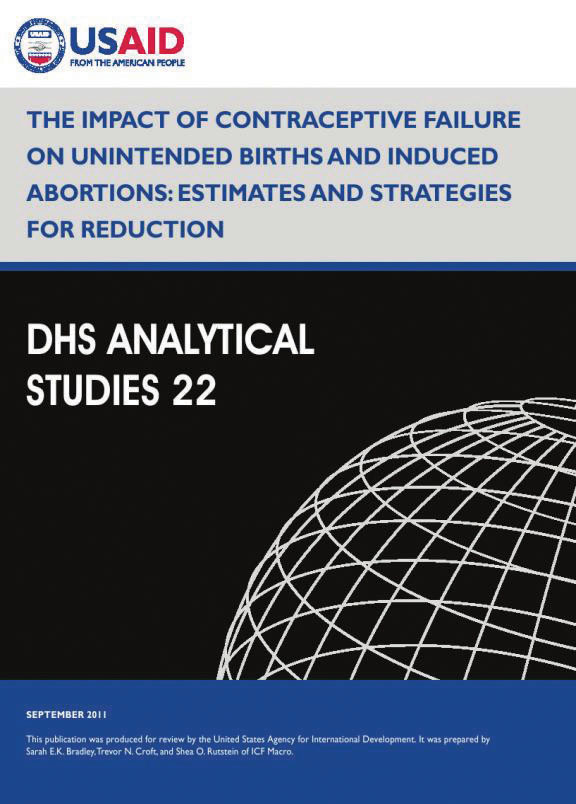- PUBLICATIONS
- JOURNAL ARTICLES
- ACCESS PUBLICATIONS
Publications Summary
- Document Type
- Analytical Studies
- Publication Topic(s)
- Family Planning
- Language
- English
- Recommended Citation
- Bradley, Sarah E.K., Trevor N. Croft, and Shea O. Rutstein. 2011. The Impact of Contraceptive Failure on Unintended Births and Induced Abortions: Estimates and Strategies for Reduction. DHS Analytical Studies No. 22. Calverton, Maryland, USA: ICF Macro.
- Download Citation
- RIS format / Text format / Endnote format
- Publication Date
- September 2011
- Publication ID
- AS22
Download
 The Impact of Contraceptive Failure on Unintended Births and Induced Abortions: Estimates and Strategies for Reduction (PDF, 727K)
The Impact of Contraceptive Failure on Unintended Births and Induced Abortions: Estimates and Strategies for Reduction (PDF, 727K)
